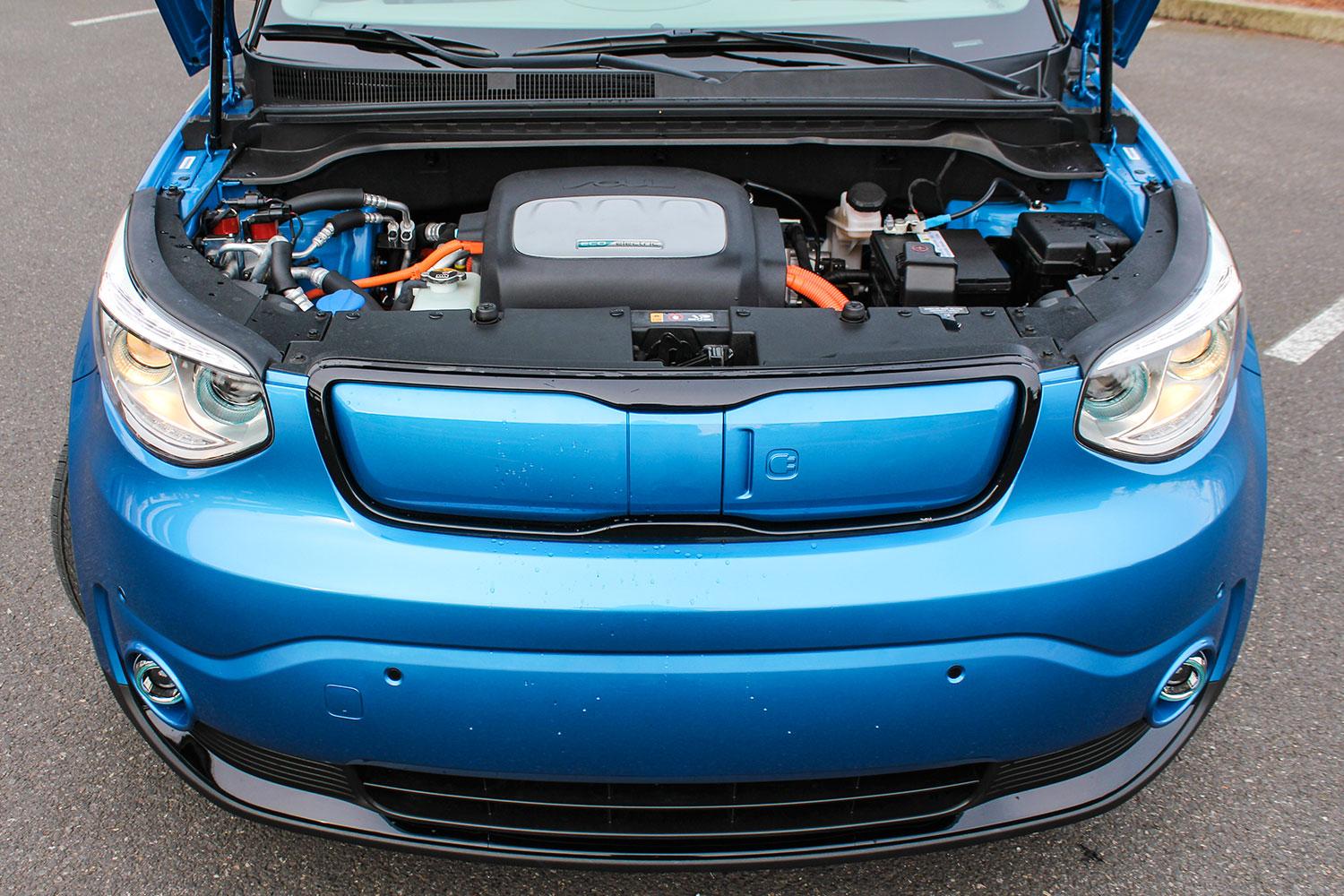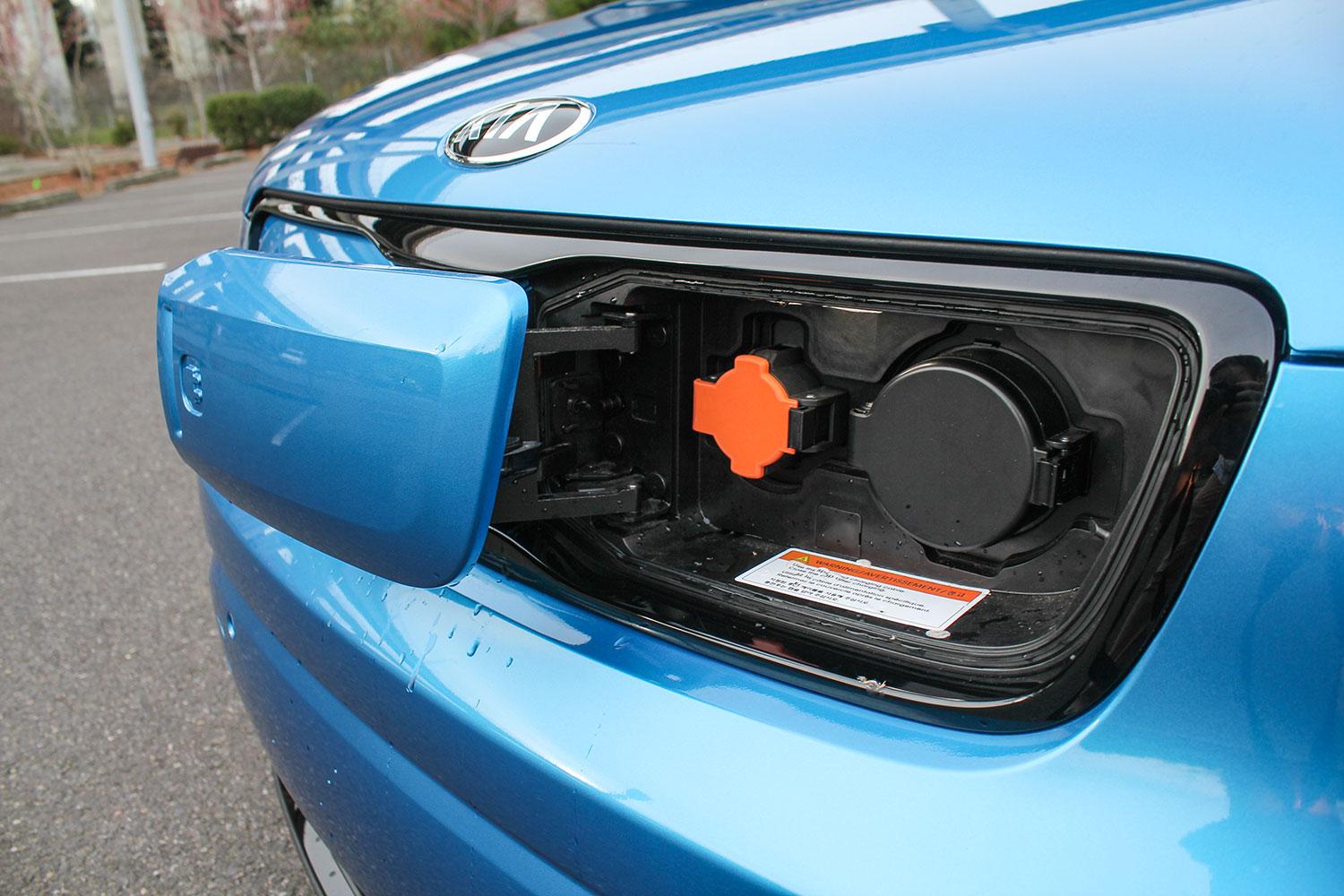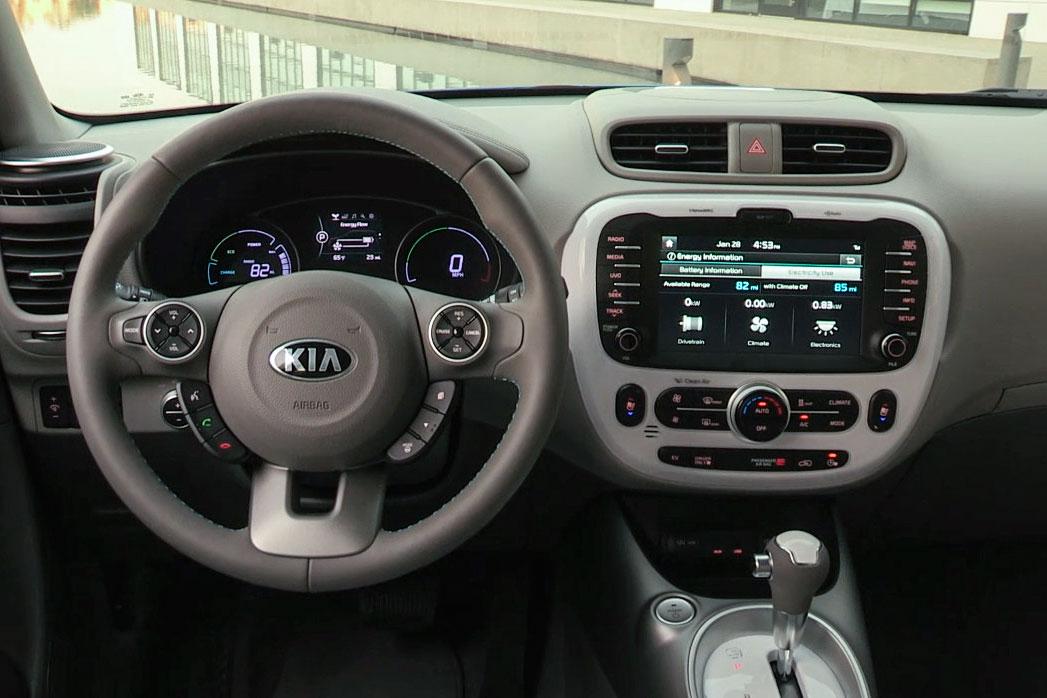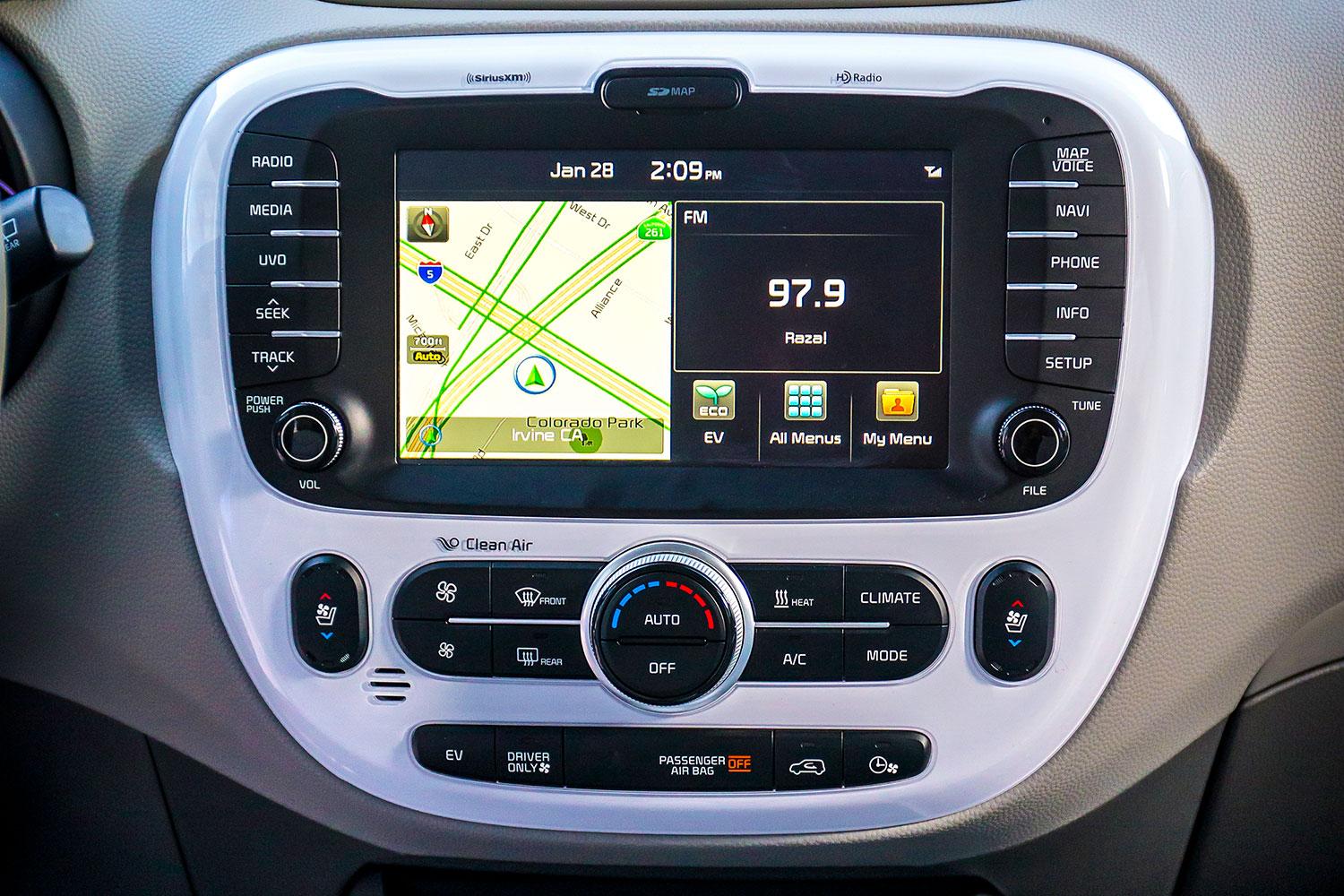“For a car that is advertised as a fashion accessory, the 2015 Kia Soul EV is a surprisingly practical and fun car, not to mention a compelling argument for EV ownership.”
- Well finished and appointed interior
- Good range
- Composed driving dynamics
- Excellent interior room
- Annoying range warnings
- Limited availability
- Relatively high starting price
The Kia Soul EV looks like a cartoon from the Korean future, and is advertised by hamsters that by all the laws of decency and science should be long dead. So who would have thought that it is probably the most practical EV on the market today?
To put it simply, what the Soul EV does, and does well, is be a car — albeit a charismatic and funky one. Unlike some other practical EVs, driving it doesn’t feel like a novelty or a compromise to save polar bears. In fact, the electric hamster is one of a recent crop of vehicles that, while designed primarily with internal combustion in mind, feels more at home with a batch of batteries than a carbon-churning mill under the hood.
A layer of funkiness atop a heap of practicality
The dirty secret of the Soul is that it is actually a brutally practical box on wheels. Kia has carefully covered this sensible brutalism with oodles of cute styling. The current generation of Soul manages to be both twee and also a little more grown up than previous cars.
Unlike some other practical EVs, driving it doesn’t feel like a novelty or a compromise to save polar bears.
On top of the Soul’s standard funkiness, the EV gets some great visual touches like a two-tone roof, an aero grille, white slab sided wheels, and, on my press demonstrator, some lovely blue piping on the seats. The result is a car that my deeply uncool self didn’t mind being seen in.
As I said though, all of the styling is a clever ruse to cover up the deeply practical nature of the design. That is a good thing, though, because, despite being just 163 inches long (just three inches longer than the decidedly subcompact Honda Fit), the Soul EV boasts a roomy and pleasant interior.
Front seat passengers enjoy plenty of headroom and big, airy windows. Unlike other compacts, this doesn’t mean that rear seat passengers need be members of a support group for legless anorexics. Cargo space is adequate but not amazing, and, disappointingly, the rear seats don’t fold completely flat, resulting in a slant-y and high load space. Even with the cargo ramp, it’s hard to argue that the Soul isn’t all the car anyone would ever need.
Dynamics? I am shocked!
Saying that the standard Soul is underpowered is like saying folks in the Middle East occasionally don’t get along. So, by those standards, the 109-horsepower — all of whom are named “Zappy” — and 210 pound-foot electric motor is a revelation.
All that electric torque is good for — drumroll please — a 0-to-60 time of 11 embarrassingly long seconds. Yet as we recently wrote, 0 to 60 times don’t tell the whole story, because the Soul EV actually feels pretty brisk. The torque at low and medium speeds makes for good lane changes and dart-y around town driving.
While far from sporty, the driving dynamics of the Soul EV are surprisingly good. Steering is sharp and surprisingly connected feeling. Together with the nicely supple suspension, the Soul EV feels like a quality and surprisingly luxurious vehicle.
My god that’s a lot of equipment
Speaking of luxurious, the Soul EV is laden down with a lot of the toys I would normally expect to find on a luxury car. In fact, despite the Soul EV being not that far removed from a car with a starting price of just $16,000, it has a decidedly pleasant, well-made interior.
My loaded + model was outfitted with everything from heated and ventilated seats with leather trim to an impressive suite of electronics — including Kia’s UVO infotainment — and range-saving features.
Some of these features, like the ability to have climate control for the driver only or the extensive readouts on battery consumption and efficiency, are quite clever. Others are … less so.
The low battery warning, for example, was obviously designed by a paranoid sadist. When the charge drops below 25 percent, an audible warning cuts through whatever was playing on the stereo and warns the driver to find a charging station.
Simultaneously a warning pops up on the infotainment system. The problem is that, once acknowledged, this warning reoccurs every 60 seconds or so. Have something on the nav? You probably don’t need to see that – the battery is low! Listening to an important voicemail? Did you know you have a low battery? The answer is of course yes, because the range and charge information is displayed right on the damn instrument cluster.
Is the Soul EV the only car you need?
Kia claims that the Soul, thanks to its incredibly powerful 27 kWh battery pack, has better range than any EV except the Tesla Model S.
The DT Accessory Pack
Up your game and the get the most out of your gear with the following extras, hand-picked by our editors:
Thule Aeroblade Roof Rack Bars ($170)
Add some cargo space and flexibility to the practical Soul EV with a roof rack.
Bosch Electric Vehicle Charging Station ($581)
Make sure you have the latest in charging tech with this Bosch Level II charger.
Cobra CDR-900 HD Dash Cam ($197)
Keep an eye on things with one of the best dash cams on the market.
Still, for the average driver, this range, paired with a four-hour charge time on a 240-volt home charger, is more than enough.
Prices sound a bit steep, with the standard Soul EV retailing for $33,700 and the + selling for $35,700. However, EV customers are entitled to a $7,500 tax credit from the Federales – thanks, Obama — and a further $2,500 from the state of California where the Soul EV is initially on sale.
With these incentives, the Soul EV is a pretty compelling choice. For people who need a car to commute and get around town in quiet comfort, there are frankly not many better options.
Highs
- Well finished and appointed interior
- Good range
- Composed driving dynamics
- Excellent interior room
Lows
- Annoying range warnings
- Limited availability
- Relatively high starting price








